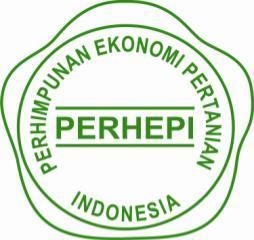| JOURNAL ACCREDITATION |
1.png) |
| ABOUT JAA |
| Aim and Scope |
| INFORMATION FOR AUTHOR |
| Online Submission |
| Author Guidelines |
| Submission Guidelines (E-book) |
| Submission Guidelines (Video) |
| Template Download |
| Statement of Originality |
| INDEX |
 |
 |
 |
| |
| TOOLS |
| |
| COLLABORATION |
 |
| VISITOR STATISTICS |
Author Guidelines
General Requirements
- The authors must ensure that the submitted articles is authentic and never been published in other journals stated by Statement of Originality.
- The articles that will be published in Jurnal Agroekoteknologi dan Agribisnis (JAA) can be research results, policies analysis, brief communications, opinions, concepts, and reviews which covered agricultural (cultivation), agricultural economy, agribusiness, agricultural technology, animal husbandry (production and technology), feed and nutrition science, and animal health.
- The published articles determined by JAA Editorial Board based on competent Peer-Reviewers judgment.
- The articles sent to editors via OJS. The articles must be written in Microsoft Word and write the authors name as the file name. Questions can be addressed to JAA Secretariat: Jl. Aria Surialaga No. 1, Bogor 16112, West Java, Phone: +6281808204496.
- The article is written in Indonesian and following correct grammatical orders.
Writing Standards
- The articles should be typed in 1 space and 1 column. The articles typed in one column of A4 paper with the total of 3000-6000 words including figures and tables. The articles later on will be finalized in two columns format.
- The articles should be typed using Microsoft Word The standard font is Arial 11.
- The articles should be arranged in sequence: title, author's name, institution, and origin (city, province, and/or country of origin).
- The article consists of abstract, introductions, methods, results and discussion, conclusions, acknowledgments (optional), and references.
- Binomial or trinomial (italic) Latin nomenclature is used for plants, animals, insects, and diseases. The full chemical name is used for the compounds at the first mention.
- Measurement unit used is International Standard (IS).
- The writing of decimal numbers using comma (,).
Articles Writing Procedure
Title. The title should be short, specific, and informative which reflects precisely the content of the articles, maximum in 15 words written in Indonesian and English. It is written in Arial font 12, space 1 and bold, capitalized each word.
Author name and institution. The title followed by authors name (without any titles), institutions and addresses, and footnote referring to the corresponding author(s), complete with mailing and email address.
Abstract. Abstracts are written in Indonesian and English minimum in 200 words and maximum in 250 words in one paragraph. Abstract contains the brief summary of the entire articles, i.e background, goals, methods, important results, discussion, and conclusions. Avoid using abbreviations unless it has been commonly used.
Keywords. Keywords are written in English, consists of 3–5 words/phrases, arranged by alphabetical order, and presented at the end of abstract.
Introduction. In this section, presented a background that is supported by the brief literature, goals, and scopes of research if needed, so the readers can evaluate the results without having to read the previous publications. The literature used must be truly relevant to the research. The literature review should be integrated into the introduction, methodology, and discussion. Research aims should be stated in the last paragraph.
Methods. This section contains technical and detailed information, so the experiment can be repeated as well by other researchers. If special equipments/instruments are used, it necessary to provide the specifications and operating conditions.
Results and Discussion. This section presents research results, either in text, tables, or figures. The use of photos is limited on clear results. Each of figures and tables are numbered sequentially and must be referred in the articles. JAA strongly recommends using journals as the references.
Conclusions are written briefly but illustrates the research results substances.
Acknowledgments (Optional). This section can be used to appreciate funders, institutions, and personals who assisted during research and articles preparation.
References expect a minimum of 30 references primarily and latest (the last 10 years) with a minimum of 80% from primary sources (journals). JAA prefers articles which refer mainly to journal articles, research reports, and conference proceedings, rather than rely heavily on textbooks or handbooks to demonstrate articles' novelty in the subject discussed. The use of Mendeley as a tool in referencing is preferable and encouraged. References should be carefully checked for completeness, accuracy, and consistency.






